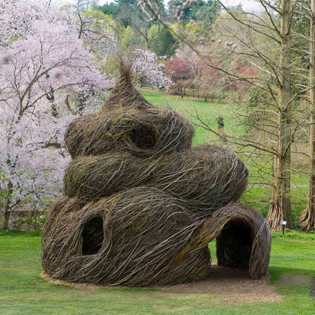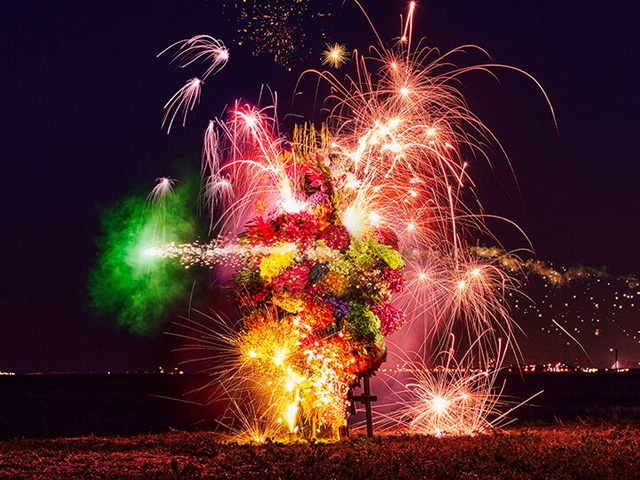ART INSTALLATIONS BRANCH OUT
16 Aug 2016
A North Carolina-based sculptor is harnessing the power of nature to create art installations entirely of shaped tree branches and natural materials.

North Carolina-based sculptor Patrick Dougherty builds natural large-scale installations that boggle the mind and make audiences revaluate the relationship between made-made structures and nature.




He combines his love for sculpture and the great outdoors by using willow tree saplings as his medium of choice. Along with a team of volunteers, Dougherty is able to weave, bend, curve, and shape the branches into houses and huts.
In the past 30 years, he’s created 250 works using these organic materials and primitive building techniques. One recent work involved putting up a monument in Melbourne’s Federation Square.
Dougherty relies on the sponsorship of an organisation to help fund and organise the work, using their name to recruit volunteers to assist with the work involved, to source saplings and to gain the needed permissions for each project.
Each artwork installation takes a period of around three weeks to grow and shape. Currently, botanic gardens and arboretums are extending invitations to Dougherty to craft installations, but he also creates works for universities, art museums and the occasional business.
Each project comes with its own set of challenges. Sometimes it can be finding the right materials to suit the environment, which in particular can be quite challenging in tropical settings. Being an outdoor installation can also mean from time to time that the project and the workers may be at the mercy of the elements, with snowstorms and weather related incidents causing project delays due to visibility and adverse conditions.
Sometimes the challenges can extend to anything from site or city zoning problems as well as extensive paperwork requirements that cause delays before the real work can even begin. There are even the more banal problems of the occasional sticks that refuse to bend or the lack of assistants.
Dougherty tackles these problems with a positive mindset. “I imagine myself to be a problem solver and I face all kinds of snags every day with that mindset. It is fun to work with gardens and arboretums because their staffs are specialists in solving the kind of problems that sculptors often have; that is, how to harvest materials, haul something, or correctly set up the scaffolding for work.”
As for the message that hopes Dougherty to impart with his art, “I believe that artists should follow their compulsions when imagining new work and let art history take care of itself. I have always imagined that my job is to make compelling work which stirs the viewer up, excites the imagination and causes passersby to come running. For me, that has meant exploring non-traditional settings and building sculpture onsite with saplings from some nearby grove. Since sticks are frail, it has also meant delving into concepts of impermanence and life cycles. In this quest to intrigue, the element of surprise and finding a rightness-of-scale are key."
“Although my sculptures are not meant for habitation, they tend to remind people of their profound connection to the world of nature, and seem to foster fantasies of walking away from the geometry of the city dweller and fading back into the forest for a day.”







